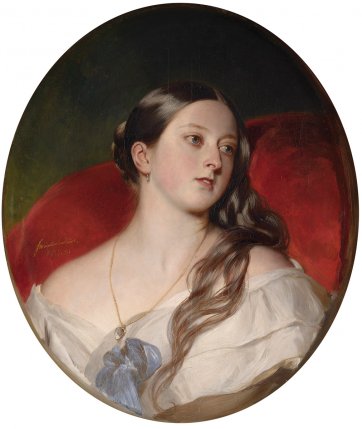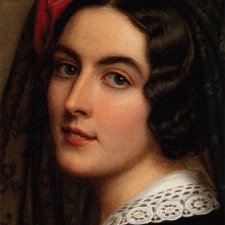Two quite different exhibitions in London – one which opens mid October and the other closes at the end of that month – extend and enrich our understanding of portraiture. One one hand, there is the more traditional retrospective of a major Regency portrait painter, Sir Thomas Lawrence, at the National Portrait Gallery, and on the other, a kind of biography of a love-story that is Victoria & Albert: Art & Love, at the Queen’s Gallery, Buckingham Palace.
London’s National Portrait Gallery exhibition Sir Thomas Lawrence: Regency Power and Brilliance will open from 21 October 2010 to 23 January 2011. Recognised as a child prodigy, Lawrence was accepted as a Royal Academician at the age of twenty-five.
He was also a renowned collector and from 1820 till his death in 1830 was President of the Royal Academy. From the 1790s onwards, he succeeded Sir Joshua Reynolds as principal painter to the regency court and his reputation as one of the greatest European portrait painters was assured when the Prince Regent commissioned Lawrence to paint portraits of all the foreign leaders involved in the downfall of Napoleon. In a time of stark contrasts – mad kings, the pressures of the industrial revolution, Napoleon’s rise and fall, convict transportation to Australia, Wilberforce’s anti-slavery activism and the American War of Independence from Britain – Lawrence caught the glamour and brittleness of regency high society. Accredited with painting 618 portraits, the National Portrait Gallery curators have assembled fifty of Lawrence’s most important works from important private and public collections.
One particularly defiant work is a portrait of Caroline Amelia Elizabeth of Brunswick, painted after her separation from the Prince of Wales. Her Royal Highness, rumoured to have taken William Lawrence as a lover, stares directly at the viewer; her left hand with the wedding band is deeply shadowed in the sumptuous rich red velvet of her gown.
Victoria & Albert: Art & Love continues to 31 October. In assembling over 400 items from the Royal Collection, this is the first major exhibition to focus on the unique partnership of Queen Victoria and Prince Albert and their shared love of art. The works on display cover the twenty-two years from their engagement in 1839 to Albert’s untimely death in 1861. Many of the portraiture works ranging from sculptures, busts, medallions, cameos, paintings and decorated jewellery were personal gifts and therefore rarely seen in public. Although Victoria appointed British artists as principal painters throughout her reign, she also favoured a German court painter, Franz Xavier Winterhalter, whom her cousin Louise, Queen of the Belgians recommended to her. Winterhalter was responsible for many of the more important portraits of the Queen and her court, as well as intimate works of Victoria, Prince Albert and the royal children.
One intimate oval portrait of the Queen, with her hair loosed and falling over her left shoulder, was commissioned by Victoria as a secret birthday present for Prince Albert in 1843. It was to be the prince consort’s favourite portrait of his wife. Albert returned the favour in 1844 by commissioning an exquisite bracelet, with a miniature portrait of himself in armour painted on enamel, for her birthday in May of that year. Her diary records the passion and intimacy of the marriage: ‘Albert took me to his room, where he gave me a most lovely bracelet, with his dear picture … set with a replica of the Collar of the Order of the Garter, in enamel work. It is his own exquisite taste and one of the loveliest things I ever saw.’
















